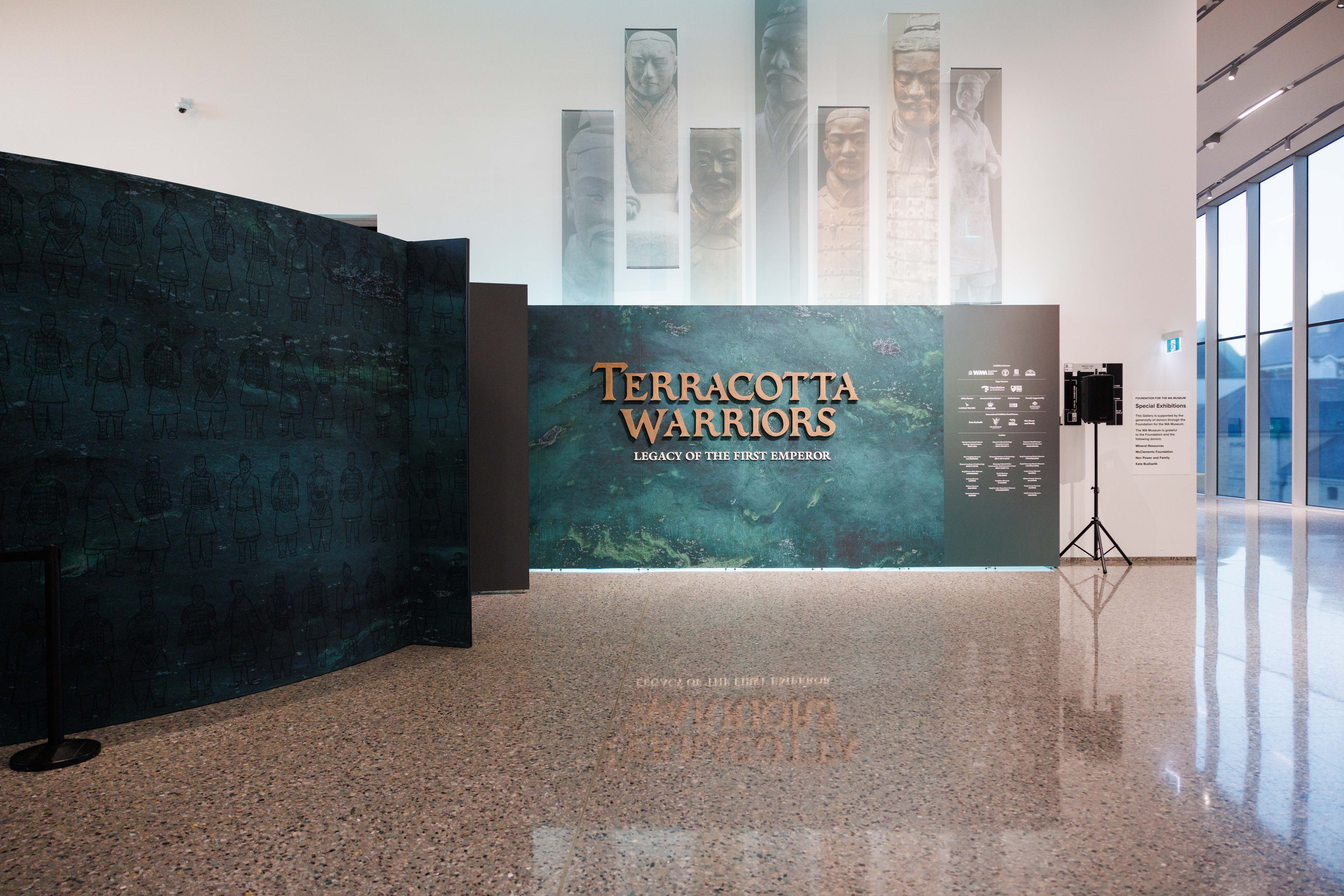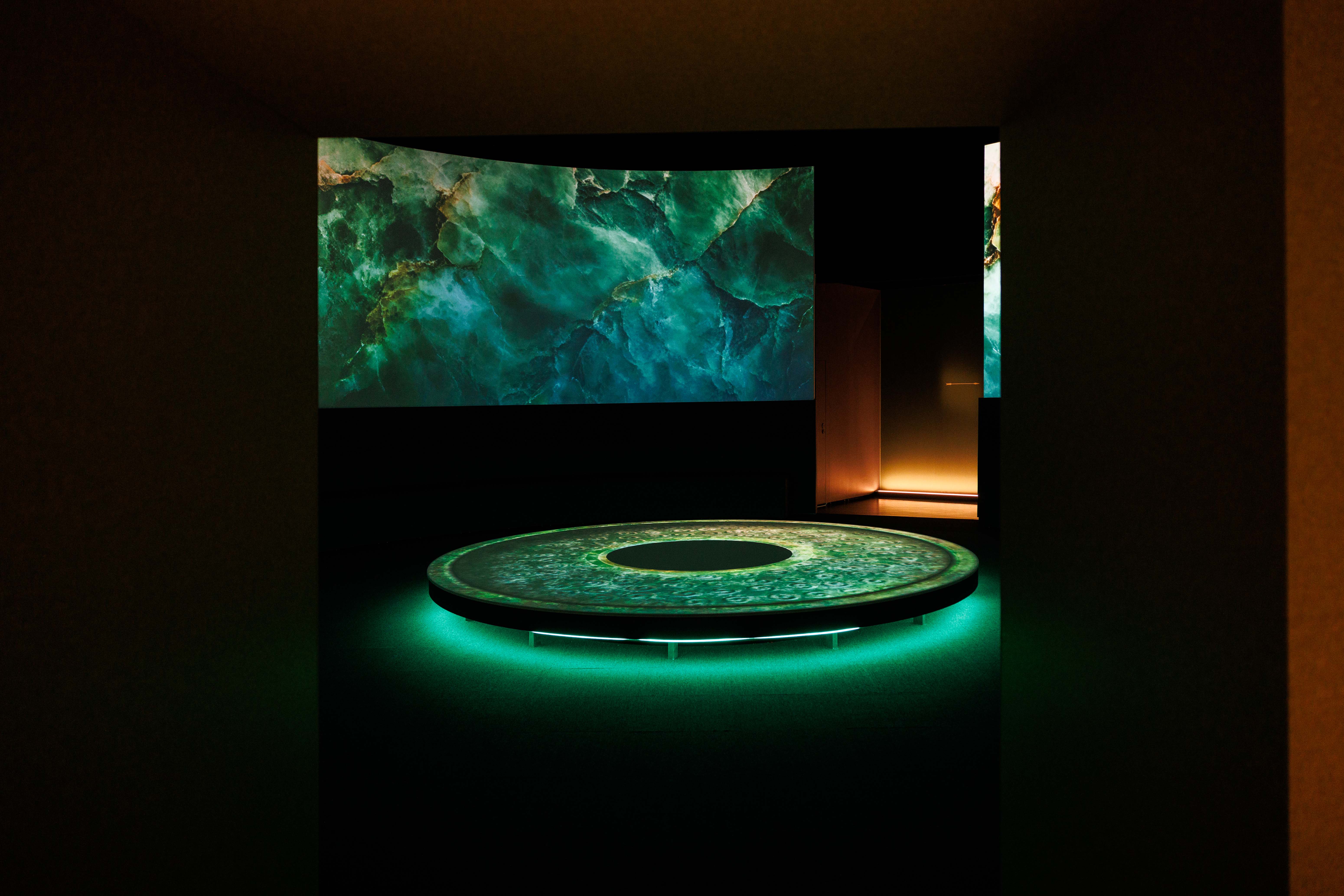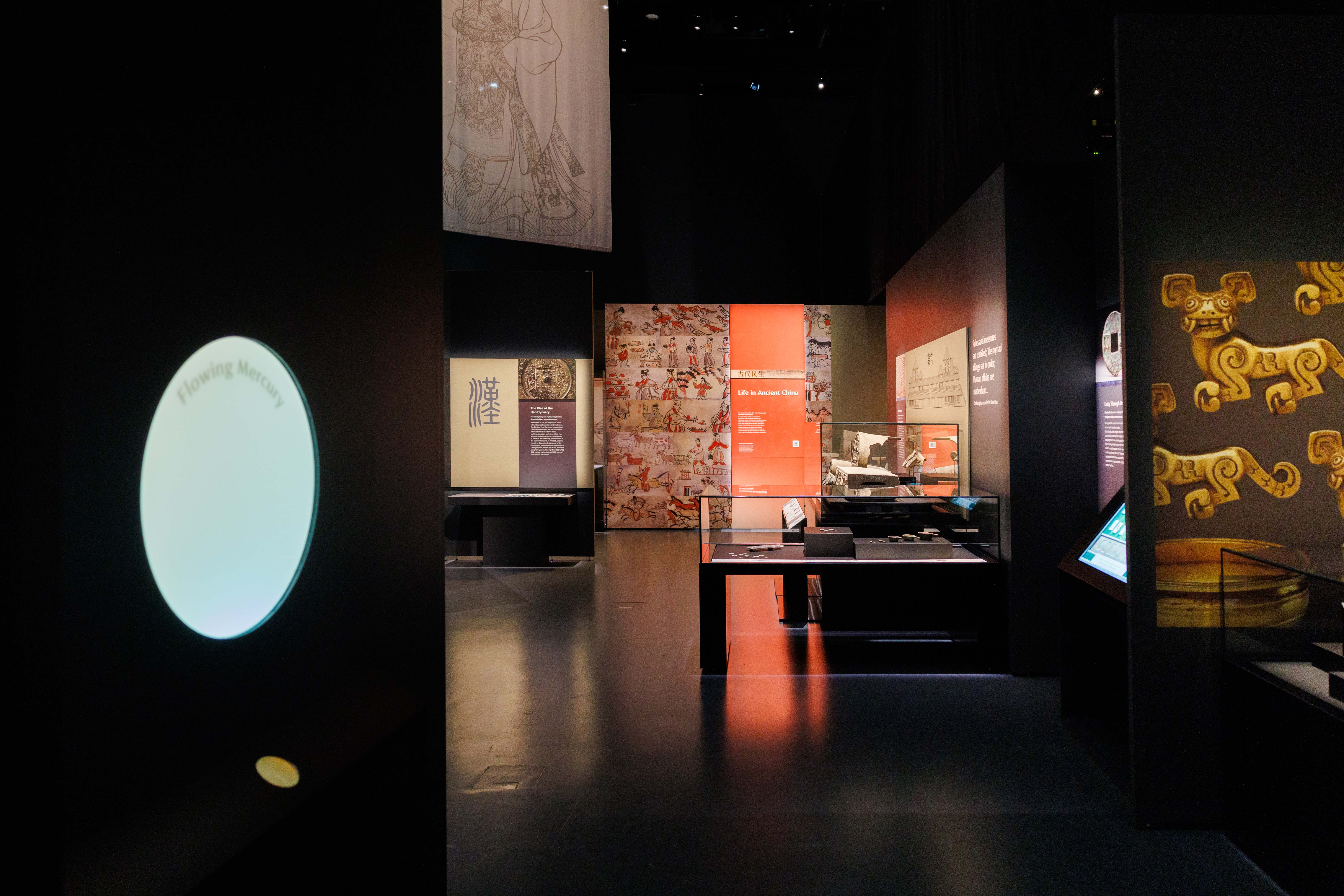Before Entry
Visitors preparing to attend the Terracotta Warriors: Legacy of the First Emperor exhibition are encouraged to familiarise themselves with the exhibition environment ahead of time. Sensory and visual planning tools can help structure the visit, especially for those who benefit from predictability and orientation in new spaces.
Terracotta Warriors Sensory Map – PDF [2.6 MB]
Terracotta Warriors Visual Story – PDF [1.34 MB]
A journey through ancient China — preview the layout, lighting conditions, and sensory features before stepping inside.

Beat the Queue
On some days, visitors may find minimal or no wait times at entry. However, booking tickets online on the Terracotta Warriors page in advance is recommended, particularly for peak periods, to minimise delays and improve arrival planning. This is important because sessions are on timed schedules.
Don't miss the special 'Jade Nights' events every Friday evening during the exhibition. Book your spot for one of three sessions - 5:30pm, 6:30pm, or 7:30pm - on the Jade Nights page, as spots are limited and may sell out quickly.
Visual Planning Tools
Printable supports and checklists are available below to help structure your visit. These tools can assist with managing transitions, understanding exhibition flow, and reducing potential sensory overload.
Visit Checklist – PDF [117.54 KB]
Visual Supports – Galleries – PDF [248.92 KB]
Visual Supports – Symbols – PDF [571.25 KB]
Access Considerations
The following information outlines key accessibility features and barriers across the exhibition, with a focus on vision, hearing, mobility, and sensory needs.
Visitors who are Blind or with Low Vision
The exhibition includes several dimly lit spaces, which may make independent navigation and label reading difficult for visitors who are blind or have low vision. Assistance from a companion may be beneficial. The WA Museum accepts Companion Cards.
Tactile Access
Some tactile elements are incorporated into the exhibition, including replica bronze vessels, musical instruments, and terracotta artefacts such as a suit of armour. These can enhance the experience for tactile learners, though they are not accompanied by audio description.
The Bo Bell, located at the entrance to the exhibition, is one of the oldest items on display. This 45-kilogram bronze bell stands 64 cm tall and features ancient dragon and phoenix carvings. While not tactile, it may be of interest to visitors who are blind or have low vision when supported by a guided description.
Use of Assistive Apps
Visitors using text-to-speech apps (e.g. Seeing AI) may find that museum lighting policies restrict flash use. Staff typically respond with understanding if this is explained. However, some apps may struggle with label interpretation, such as misidentifying text as non-English, which can impact usability.
Lighting and Visibility
Brighter areas, such as the projection walk-through, the main sculpture hall, and the exit displays, offer improved visibility for visitors with low vision. However, much of the exhibition remains dim, which could limit full independent access.
Visitors who are Deaf or Hard of Hearing
Visitors who benefit from assisted listening or captioning may wish to contact the venue in advance to inquire about available supports.
Mobility and Dexterity
The exhibition is largely accessible for visitors with physical disability. Seating is distributed throughout the space and provides helpful rest points.
Interactive displays that require use of a magnetic trigger (Bi magnet) are set at a suitable height and were found to be accessible. While the magnet may require some fine motor control, its operation is simple — it is placed over marked circular pads to activate projections.
The seating area for the introductory talk is located at some distance from the waiting zone, which may pose a barrier for some visitors.
Cognitive and Sensory Considerations
Museum staff are approachable and generally responsive to visitor needs. However, the exhibition’s lighting levels, and interactive technology may present navigation challenges for visitors who benefit from clearer sensory cues.
Exhibition Flow
The experience unfolds in a logical sequence, starting with a welcome and introduction. Visitors are then guided to a small circular theatre for a 4-minute film about the Qin Dynasty (also known as the Chin Dynasty). From there, they proceed directly into the exhibition, which follows a single, easy-to-follow path. This structured flow is designed to support visitors who benefit from routine and predictability.
Interactive Audio Stations
Several touch-free musical instrument displays allow users to activate sound by moving their hands over sensors.


Object Interaction: Bi Magnet
Each visitor receives a Bi magnet (pronounced Bee) at the start of the experience. These magnets interact with six circular stations throughout the exhibition. The stations represent heavenly portals, and placing the magnet on each marked pad triggers a projected visualisation of an object believed to be buried in the tomb of Emperor Qin Shihuang (pronounced Chin Shi-hwang).
These interactions are part of the immersive storytelling experience and involve light changes and digital effects, which may be stimulating for some visitors. The final section of the exhibition includes a digital recreation of the Emperor’s tomb, where these heavenly objects “come to life” in a fully immersive environment.
Lighting and Sound Environments
The exhibition alternates between dark and light environments. Visitors who are sensitive to changes in lighting may wish to plan their visit around the projection walk-through and statue areas, which offer better visibility. Soundscapes are present but are generally ambient and not overly intrusive. Volume levels are not adjustable.
Companion Card
The museum is part of the Companion Card program for people with disability and their families and support workers.
We hope you enjoy the experience back in time
The Terracotta Warriors exhibition provides a rich historical and cultural experience, featuring tactile elements, interactive displays, and compelling visual storytelling. The structured layout, welcoming staff, and variety of engagement methods make the experience accessible to many.
However, some barriers remain, including low lighting throughout much of the space and a lack of audio descriptions for key displays. Visitors who rely on screen readers, consistent lighting, or auditory support should plan accordingly.
With thoughtful preparation and the support of museum staff, many visitors with diverse access needs can enjoy a meaningful and engaging experience.
For further information, please contact reception@museum.wa.gov.au or call 1300 134 081.
The WA Museum has collaborated with the Centre for Accessibility Australia to develop the access information available.

|
